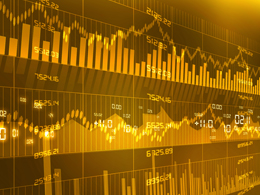 Yesterday was another bad one. The market is now below its 200-day moving average, and the selling toward the end of the day wasn't a good sign.
Yesterday was another bad one. The market is now below its 200-day moving average, and the selling toward the end of the day wasn't a good sign.
It’s time to think through what this "correction" might mean.
Why just a "correction"?
I put "correction" in quotes for two reasons:
- A correction is normally called when the market declines 10 percent or more. At yesterday’s close, we were down less than 8 percent, which doesn’t really qualify. We’re getting close, though.
- More important, the pullback hasn’t been long enough or deep enough. A correction, as its name suggests, should modify behavior. In the past, corrections have chastened investors, made them more cautious, and led to pullbacks of longer than a couple of days. We certainly aren’t there yet.
In fact, initial market action as I write this seems to confirm that a bounce-back is quite possible. Just as we’ve seen several times this year, investors may step back in, buy on the dip, and not change their behavior at all.
What might a real correction look like?
At the same time, the fact that the market has cracked the 200-day average for the first time in a while suggests we should think through what a real correction—whether now or later—might look like, so we can prepare both mentally and fiscally.
Let’s look at the numbers. (All figures refer to the S&P 500 Index.)
- From the peak of about 2,020, a 10-percent correction would take us down to 1,818, while a 15-percent correction would take us down to 1,717.
- 20 percent, which would be a bear market, would take us all the way down to 1,616. Scary stuff.
Per yesterday’s post, over the past five years, a break in the 200-day average has twice led to 15-percent declines. Right now, then, using that 1,717 number as a downside target for planning purposes doesn’t seem unreasonable. At that level, the trailing price-to-earnings ratio would be just under 16, down from the above-18 figure at the end of last month, and getting close to the average over the past couple of decades.
At that price level, valuations are much closer to reasonable—arguably, even somewhat cheap given sustained low interest rates. Of course, the market could decline more than that, but, absent some systemic global event, it’s probably the worst we can expect as of right now.
An adjustment, not a free fall
Note that this is an analysis, not a prediction. At this point, despite breaking through the 200-day average, it's more likely than not that the market will recover. This morning’s small move up shows that this is not a free fall, but an adjustment. We’ll find out over the next week or so whether or not it’s a sustained adjustment.
To close, a bit more context. A 10-percent drop from the peak would take us back to the levels of April of this year, while a 15-percent drop would put us in line with October 2013. Even a 20-percent drop would only take us back to July 2013. Giving up a year or more of gains would be painful, of course, but it would only be a small portion of the market's gains over the past several years.
No one wants—or, at this point, expects—to see such declines, but if they do come, it certainly won’t be the end of the world.



 Print
Print

